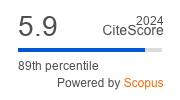Article | Open Access
Post-Hype Uses of Drones in News Reporting: Revealing the Site and Presenting Scope
| Views: | 3285 | | | Downloads: | 1786 |
Abstract: Camera-equipped drones have emerged as an increasingly commonplace tool for media to acquire aerial imagery. Previous research has mainly focused on the innovative aspects and creative potential of the technology. This article argues that early optimistic projections reflected a novelty effect, typical of a culturally embedded idea that new and better technologies continuously replace older ones. Using a historical theory which distinguishes techno-optimistic innovation discourse from actual observations of technology in use, photojournalists were interviewed on the role of drones in news reporting. The results show that the practitioners historicise drones, relating them to previous aerial technologies, and they reflect on current and future uses of drones in journalism based on a notion of phases, where early hype gives way to subsequent drone fatigue. Drones are seen by many as a more convenient tool to do things that journalism has done before, but the convenience increases the use of aerial imagery. The results also show that, although photojournalists see a wide range of potential uses, there are also limitations, including the ideals of the invisible observer, safety concerns, and the perils of over-aesthetic imagery. The post-hype uses of drone photography were summarized in two categories: (a) revealing the site, establishing ‘this happened here’ and (b) presenting scope, or showing how vast or large something is.
Keywords: drone journalism; drone use; drones; history of technology; media technology; photojournalism; unmanned aerial vehicles
Published:
© Jonas Harvard. This is an open access article distributed under the terms of the Creative Commons Attribution 4.0 license (http://creativecommons.org/licenses/by/4.0), which permits any use, distribution, and reproduction of the work without further permission provided the original author(s) and source are credited.




